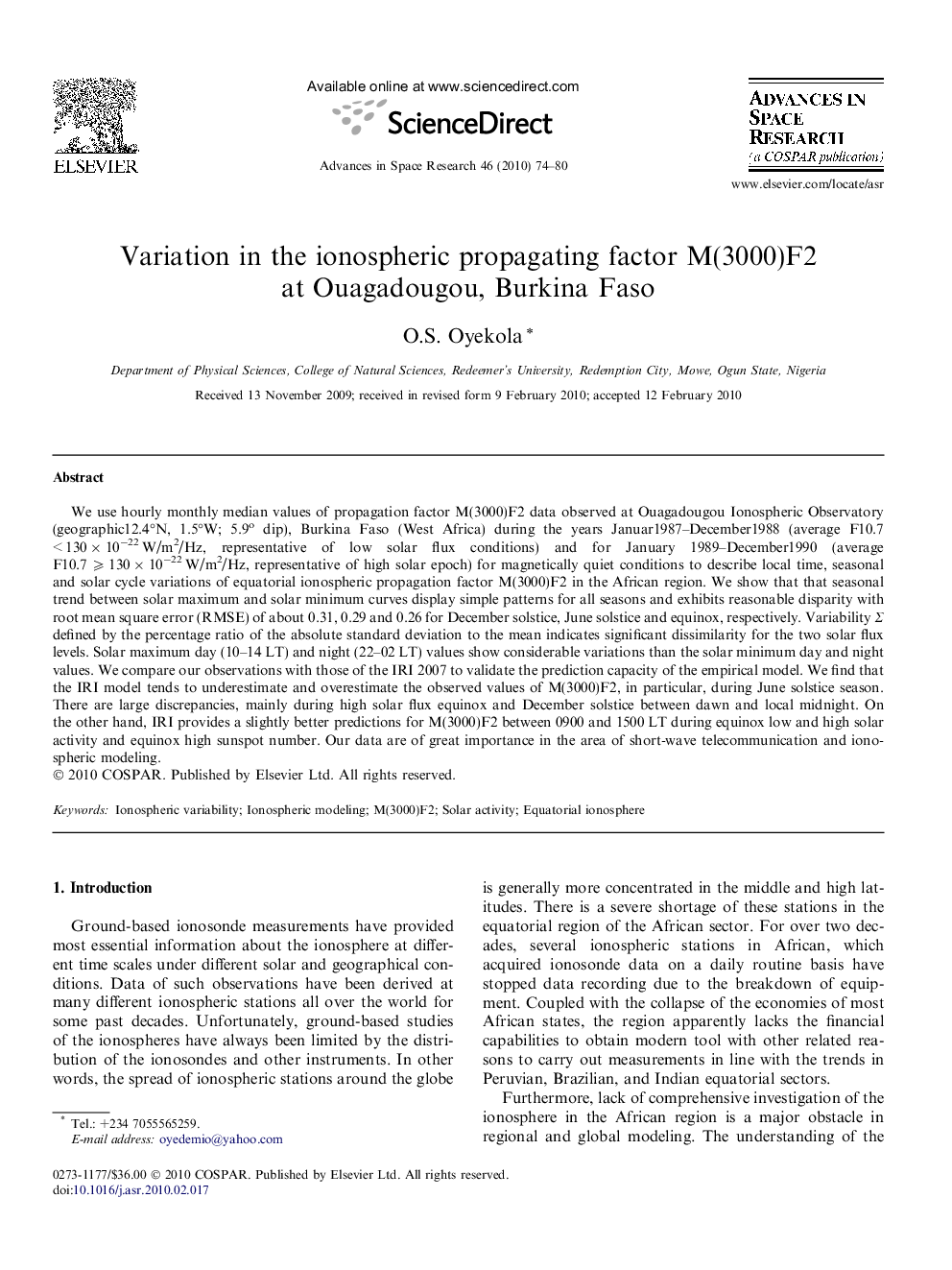| کد مقاله | کد نشریه | سال انتشار | مقاله انگلیسی | نسخه تمام متن |
|---|---|---|---|---|
| 1767371 | 1020188 | 2010 | 7 صفحه PDF | دانلود رایگان |
عنوان انگلیسی مقاله ISI
Variation in the ionospheric propagating factor M(3000)F2 at Ouagadougou, Burkina Faso
دانلود مقاله + سفارش ترجمه
دانلود مقاله ISI انگلیسی
رایگان برای ایرانیان
کلمات کلیدی
موضوعات مرتبط
مهندسی و علوم پایه
علوم زمین و سیارات
علوم فضا و نجوم
پیش نمایش صفحه اول مقاله

چکیده انگلیسی
We use hourly monthly median values of propagation factor M(3000)F2 data observed at Ouagadougou Ionospheric Observatory (geographic12.4°N, 1.5°W; 5.9o dip), Burkina Faso (West Africa) during the years Januar1987-December1988 (average F10.7 < 130 Ã 10â22 W/m2/Hz, representative of low solar flux conditions) and for January 1989-December1990 (average F10.7 ⩾ 130 Ã 10â22 W/m2/Hz, representative of high solar epoch) for magnetically quiet conditions to describe local time, seasonal and solar cycle variations of equatorial ionospheric propagation factor M(3000)F2 in the African region. We show that that seasonal trend between solar maximum and solar minimum curves display simple patterns for all seasons and exhibits reasonable disparity with root mean square error (RMSE) of about 0.31, 0.29 and 0.26 for December solstice, June solstice and equinox, respectively. Variability Σ defined by the percentage ratio of the absolute standard deviation to the mean indicates significant dissimilarity for the two solar flux levels. Solar maximum day (10-14 LT) and night (22-02 LT) values show considerable variations than the solar minimum day and night values. We compare our observations with those of the IRI 2007 to validate the prediction capacity of the empirical model. We find that the IRI model tends to underestimate and overestimate the observed values of M(3000)F2, in particular, during June solstice season. There are large discrepancies, mainly during high solar flux equinox and December solstice between dawn and local midnight. On the other hand, IRI provides a slightly better predictions for M(3000)F2 between 0900 and 1500 LT during equinox low and high solar activity and equinox high sunspot number. Our data are of great importance in the area of short-wave telecommunication and ionospheric modeling.
ناشر
Database: Elsevier - ScienceDirect (ساینس دایرکت)
Journal: Advances in Space Research - Volume 46, Issue 1, 1 July 2010, Pages 74-80
Journal: Advances in Space Research - Volume 46, Issue 1, 1 July 2010, Pages 74-80
نویسندگان
O.S. Oyekola,